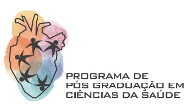Banca de DEFESA: GESSICA ALEANE MORAES ESQUERDO
Uma banca de DEFESA de MESTRADO foi cadastrada pelo programa.STUDENT : GESSICA ALEANE MORAES ESQUERDO
DATE: 27/10/2022
TIME: 15:00
LOCAL: Mini auditório do ICS
TITLE:
EVALUATION OF IN VITRO ENZYMATIC INHIBITION AND IN VIVO ANTIDIABETIC ACTIVITY OF ESSENTIAL OIL FROM Cyperus articulatus L.
KEY WORDS:
Diabetes Mellitus, Cyperus articulatus, Enzyme Inhibition and Antidiabetic Activity
PAGES: 74
BIG AREA: Ciências da Saúde
AREA: Farmácia
SUMMARY:
Diabetes mellitus is a metabolic disease resulting from defects in insulin secretion or action, being a chronic condition and a serious public health problem that can cause serious complications that can lead to death. It is important to emphasize the high costs related to its control with treatment and the numerous side effects caused by medications and the popular use of medicinal plants, highlighting the need to develop new bioactive molecules for the production of new drugs with antidiabetic potential to treat this disease. In this context, the present work studied the essential oil obtained from the rhizomes of Cyperus articulates L. (OECA) to investigate its chemical composition, acute oral toxicity, in vitro enzyme inhibition and in vivo antidiabetic activities, respectively, and to support its possible use as a therapeutic alternative in the treatment of diabetes. The analysis of the chemical composition of the OECA collected in the experimental farm of UFOPA, in the region of Tabocal in the municipality of Santarém, Pará, Brazil, was carried out using an Agilent HP-6890 gas chromatograph, the evaluation of ACUTE oral toxicity in vivo in mice Swiss according to the OECD Guide, after the enzymatic inhibition in vitro, using the enzymes α-glucosidase and lipase, and their readings were made in a spectrophotometer, in vivo using mice of the Swiss strain that were induced to experimental diabetes with the diabetogenic drug alloxan and treated with OECA by gavage during 14 days of treatment, blood glucose and physiological parameters were measured during the 3rd, 7th and 14th day of treatment and blood samples were collected to determine the biochemical parameters. Chemical characterization by GC-MS allowed the identification of 24 compounds with mustacone as the major compound. The acute toxic dose of OECA is greater than 2000 mg/kg in Swiss mice, classifying it in category 5 of the Globally Harmonized Classification System (GHS). In vitro, OECA has a low potential for enzymatic inhibition with the mean (IC50 =6.4%) against the α-glucosidase enzyme and the mean (IC50 =31.1%) against the lipase enzyme. In vivo, it significantly reduced (p< 0.001) blood glucose and, consequently, improved biochemical parameters at doses of 100 and 200 and 400 mg/kg/day. Therefore, OECA is a natural product extracted from the Amazon that presented safe, promising antidiabetic potential and a candidate for the development of new drugs, requiring further studies.
COMMITTEE MEMBERS:
Presidente - 2171514 - TANIA MARA PIRES MORAES
Interno - 1562643 - MAXWELL BARBOSA DE SANTANA
Externa ao Programa - 2210058 - MARINA SMIDT CELERE MESCHEDE - UFOPAExterno à Instituição - TIAGO SANTOS SILVEIRA - UEPA




